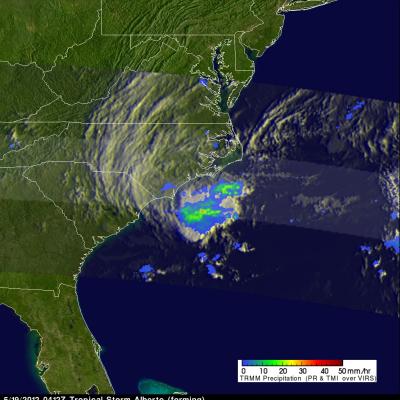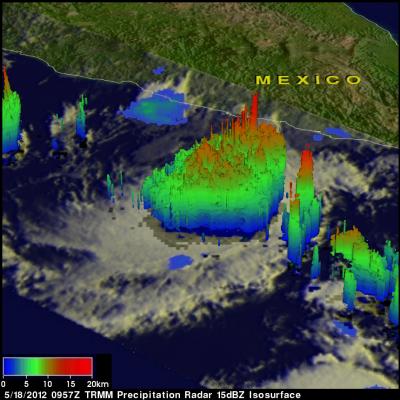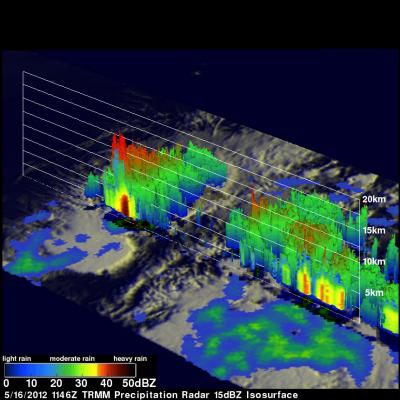Tropical Cyclone Season Gets Started in the Northern Hemisphere
Summer has not yet arrived, and yet there are currently 3 active tropical systems in the Northern Hemisphere spread across three different ocean basins. Perhaps, the most unusual of the three is Tropical Storm Alberto in the Atlantic. Alberto formed in the western Atlantic from a stationary low pressure system off of the coast of South Carolina on the 19th of May 2012, two weeks before the official June 1st start of the Atlantic hurricane season. Alberto is the first tropical storm to form this early in the season since Tropical Storm Ana in 2003, which formed on the 20th of April west of





